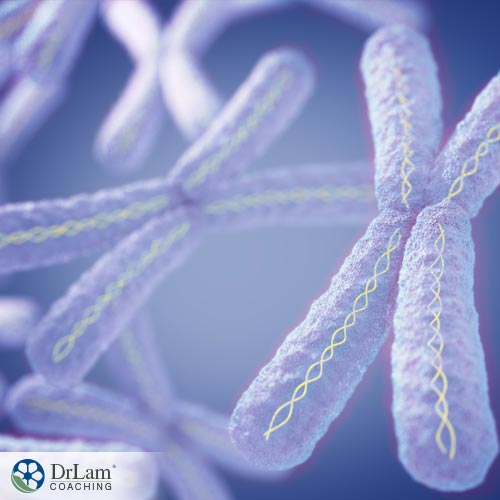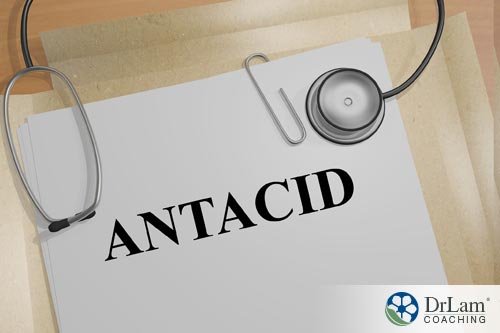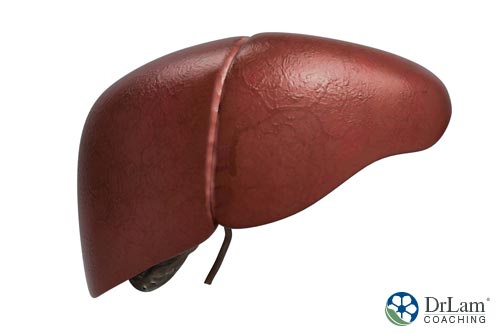So far, there are three main theories on what causes aging:

And once again, there is a common denominator involved in all three: a decline in Nitric oxide(NO) production.
For example, NO controls and regulates telomerase activity, and with less NO, you get a shortening of telomeres. Telomeres are the caps found on the ends of DNA strands that protect chromosomes. Any changes in the length or structure of telomeres cause cell cycle arrest, or cellular senescence because the DNA strands are then exposed to damage. And interestingly enough, stress and inflammation can trigger or aggravate telomeric shortening, and hence, aging.
With the mitochondria, if there isn’t enough NO, the mitochondrial electron transport chain becomes uncoupled and that generates oxidative stress. Mitochondria are tiny membrane-bound organelles found inside the cells that are responsible for producing ATP, the energy used by all the processes of the body. Any disruption in mitochondrial biogenesis or function leads to faster aging and other age-related conditions, such as Alzheimer’s disease.
And finally, a lack of NO can create a loss in the mobilization of resident stem cells. That’s because NO is the requisite signal for stem cell mobilization and differentiation into different target cell types. Without this mobilization, there is a loss of stem cell function and repair.
Patients undergoing stem cell therapy are directly affected by the bioavailability of NO in their system. Those who have a better basal NO respond better to therapy, so it goes without saying that by normalizing NO levels first, you give stem cell therapy a better chance at success.
Aging has been linked to an increase in free radicals as well. And NO is an important antioxidant, its lack can create an accumulation of oxidative damage in the body.
After understanding the crucial role NO plays in almost every chronic condition, including adrenal fatigue and inflammation, you’re probably asking yourself if you need to add it to your life.
There are some parameters that can give you some information about whether you should inquire further about it or not. The people that should consider increasing NO in their systems are:
This can be pretty much everyone, since all health conscious people are interested in preventing disease, increasing energy, improving circulation, and reducing the effects of aging.
So now the question becomes: how do you stimulate endogenous nitric oxide or take exogenous nitric oxide without developing tolerance to it?
There are a few different methods for increasing NO production and depending on your current condition, only choose those that are suitable for you and approved by your doctor.
 The healthy stress that exercise adds to endothelial cells stimulates NO production. Some athletes actually train at high altitudes to improve this NO producing ability even more. And in fact, NOS derived plasma nitrite is a good predictor of exercise capacity – meaning your ability to produce NO predicts how good of an athlete you can be, so it’s a two-way street. Those with advanced AFS need to be very careful as excessive exercise, even in mild forms, can trigger adrenal crashes.
The healthy stress that exercise adds to endothelial cells stimulates NO production. Some athletes actually train at high altitudes to improve this NO producing ability even more. And in fact, NOS derived plasma nitrite is a good predictor of exercise capacity – meaning your ability to produce NO predicts how good of an athlete you can be, so it’s a two-way street. Those with advanced AFS need to be very careful as excessive exercise, even in mild forms, can trigger adrenal crashes.
Unfortunately, age-related endothelial dysfunction can hinder your ability to increase plasma nitrite in response to exercise. In that case, you’ll want to consider other options.
Up to 85% of your nitrate/nitrite will come from green leafy vegetables, 10% will come from swallowing your own saliva, and only 5% will come from cured and processed meats. In general, we do not recommend eating cured and processed meats, only clean, lean, and organic meats. This is especially the case if you have AFS.
Leafy greens can be a great way to increase your NO. Dr. Esselstyn recommends six portions of steamed dark leafy greens a day for his heart disease patients, but again, you’ll need to check with your nutritionist and doctor first before changing your diet routine. The adrenal fatigue diet is full of nitrate-rich vegetables, but if you plan on increasing their consumption, even more, we advise that you do so gradually and under supervision. This is especially due to the fragility of some mineral balances involved in AFS.
In general, the US population is not getting enough nitrate. The necessary amount of nitrate to see changes in blood pressure or exercise capacity is around 300-400 mg per day, and the average American gets only 140 mg per day.
The fruits and vegetables highest in nitrates are:
Beet juice has a higher concentration of nitrate than eating beets whole, and this is why athletes use it. But you’ll need to take care if you want to try beet juice as it can spike your blood sugar. If you have AFS, spikes in blood sugar can lead to crashes in blood sugar, which add a lot more stress on your adrenal glands and your entire system.
If you’re unable to get enough NO through diet and exercise, there may be specific issues you have to fix first. Some conditions that can disrupt the nitrate-nitrite-NO pathway include:
 The first and most obvious thing to do is to reduce or eliminate any medications or products that inhibit NO production if possible. That includes anything that can damage your stomach acid and microbiome, or kill off the bacteria needed for the nitrate-nitrite-NO conversion process.
The first and most obvious thing to do is to reduce or eliminate any medications or products that inhibit NO production if possible. That includes anything that can damage your stomach acid and microbiome, or kill off the bacteria needed for the nitrate-nitrite-NO conversion process.
These include antiseptic mouthwash, antibiotics, and PPIs (antacids). You’ll want to make sure that you have your doctor’s approval first, especially if you’ve been taking PPIs for a long time, so you can wean off of them without getting adverse effects.
Maintaining good oral hygiene is also very important, and keeping your teeth and gums in good shape through flossing, brushing and tongue scraping, without using an antiseptic mouthwash, is the tried-and-tested way to do so.
You’ll also want to ensure you are getting the right treatments for any of the other mentioned conditions. Find ways to reduce oxidative stress by leading a healthy lifestyle, managing your stress levels, and eating a diet rich in antioxidants.
If you have adrenal fatigue, you should follow an adrenal fatigue diet, do adrenal breathing and adrenal yoga exercises, get enough rest and sleep, reduce your stress levels, and take the right kind of supplements for your specific needs.
There are so many different nitric oxide generating products on the market that you’ll have to be very careful with experimenting with them. For example, one of the more popular formats of NO supplements are beetroot products, but there is such a huge difference in nitrate content in different beets and beetroot products that you will likely not get it right the first time around. Arginine is also popular but is only contributory if taken in high doses. Those with AFS may not do well. The more advanced the state of AFS, the higher the risk of L-arginine triggering adrenal crashes.
Same goes for other vegetables and nitrate products. This is why it is best to take on any supplement regiments with the guidance of a trained professional.
If you suffer from angina, you may have already had some experience with medications that use the dilatory effects of NO. For example, medications with nitroglycerine that is metabolized into NO work for angina because they dilate the coronary arteries and you get relief from ischemic pain.
If your NO deficiency stems from a lack of stomach acid, then that will be your first task: getting your stomach acid levels back to normal. Other than reducing or stopping PPIs, you’ll need to check if you have iodine, zinc, sodium chloride, or vitamin B1 deficiency. You have to fix these deficiencies, as well as any magnesium deficiency, first before you can fix NO production.
Another quick and easy way to re-acidify the lining of your stomach is by using apple cider vinegar.
And lastly, ensuring a smooth detoxification response can help get rid of toxins and metabolic waste products that can be damaging the microbiome, stomach lining, adrenal glands, nutrient balance, and ATP production. But any detox has to be done under supervision so that you do not overload your system and cause adverse effects.
The loss of endothelial NO function is associated with all major cardiovascular risk factors, including hypertension, smoking, hyperlipidemia, diabetes, and atherosclerosis. In fact, loss of endothelial NO function is one of the earliest predictors of future cardiovascular issues.
The link between NO and heart disease is so strong that in studies conducted on mice, scientists found that if they improve NO in the myocardium before inducing a heart attack in the mice, the NO actually protects the heart tissues from injury, with no infarctions found in the heart afterward.
There are hundreds of risk factors for cardiovascular disease, and most can be corrected by restoring NO production. It’s been found that with just 1% improvement in endothelial function, you can get a significant decrease in cardiovascular risk. In another study, an ultrasound was done before and 10 minutes after the participants took a nitric oxide lozenge. They saw a 13% increase in vessel diameter, which caused a 34% increase in blood flow.
 But that’s not all. With the liver biochemistry being similar to that of the heart’s, they also found that if they shut off the blood flow to the liver for an hour, the liver tissues were not damaged. The NO produced in the heart actually protected the liver as well. This means that NO has an endocrine function, and if you produce it in one area, you can protect organs in other areas of the body.
But that’s not all. With the liver biochemistry being similar to that of the heart’s, they also found that if they shut off the blood flow to the liver for an hour, the liver tissues were not damaged. The NO produced in the heart actually protected the liver as well. This means that NO has an endocrine function, and if you produce it in one area, you can protect organs in other areas of the body.
We predict that very soon, NO production and endothelial function will be cornerstones of cardiovascular and regenerative medicine, and screening for NO deficiency will become much more common. Using vascular function tests and plasma nitrite concentration tests will help determine the state of endothelial function and whether there is a need for an increase in NO availability in the system.
Until then, if you’d like to explore nitric oxide as a possible supplement, or if you’d like to increase your NO production through other means, make sure you do so with the help of an experienced professional. Don’t use the shotgun approach to supplementation, where you try many different supplements at the same time hoping that one or more will work. Changes in diet and supplement routines always have to be gradual and cautious, so you don’t put too much pressure your system, especially if your adrenals are in a weakened state.
© Copyright 2018 Michael Lam, M.D. All Rights Reserved.

